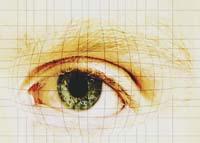The magic of the moon

Look at the environment, things are not seen as day and that is quite rare. In short, the light of the Moon is the same light emitted by the Sun, once reflected on the surface covered by dust of the Moon. So, why does everything look so different?
To begin with, the Moon removes colors. There are special gardens that are more beautiful by night than by day; they are moongardens. The flowers of these gardens extend at night and are usually silver or white. A red rose that can be queen of flowers during the day looks gray at night, while white flowers have a special shine. It seems that the Moon has stolen the color from the red rose.
In addition to the rose, all other things are seen in black and white in the light of the Moon. But it is not the only particularity. In fact, when you spend a lot of time looking at the surroundings, you realize that the landscape becomes bluish. This bluish is called Purkinje effect, since a scientist named Purkinje was the first to explain the phenomenon, the XIX. In the twentieth century.

To notice the purkinje effect well, it is best to get away from artificial lights. As the eyes adapt to the dark, the view becomes blue. For this reason, to achieve the natural effect, the filmmakers often use a blue filter to film night scenes and the painters behave similarly when they paint nocturnal landscapes.
Finally, in the light of the Moon, one cannot read. Yes, so does the article. If you want, try. Tonight, under the Moon, opens a book that seems to be enough light to read. However, just start reading, you will discover that the words disappear.
Looking into the eyes
The moon, therefore, steals colors, lightens the view and removes the words of the books. It seems a mystery, but in the article they explain why it happens.
First of all, it is worth knowing a fact: The light of the Moon is approximately 400,000 times weaker than that emitted directly by the Sun. With this luminosity, human eyes do not function as a day.

The retina is similar to a digital camera with two types of pixels: cones and batons. The cones allow you to see colors and details like the red color of the rose and the words of the book. But cones only work when the intensity of the light is high. When the sun hides, the sticks take care of the vision.
Sticks are extremely sensitive, a thousand times more sensitive than cones. However, in the center of the retina, central phobea, there are no sticks. And it is the central phobe that uses the brain to read. During the day there is no problem, since the phobe has many cones that allow us to read. At night the phobe becomes blind. And the vision of the rest of the retina is not enough to distinguish letters and words.
This explanation, however, is not enough to explain why the view is blurred. Although scientists have raised several hypotheses, they have not yet found the physiological explanation. Therefore, the mystery of the lunar light has not yet been fully solved. And another mystery: there are people who have no problem seeing or reading the colors in the light of the Moon... Are you among those?
Published in 7K.
Buletina
Bidali zure helbide elektronikoa eta jaso asteroko buletina zure sarrera-ontzian











